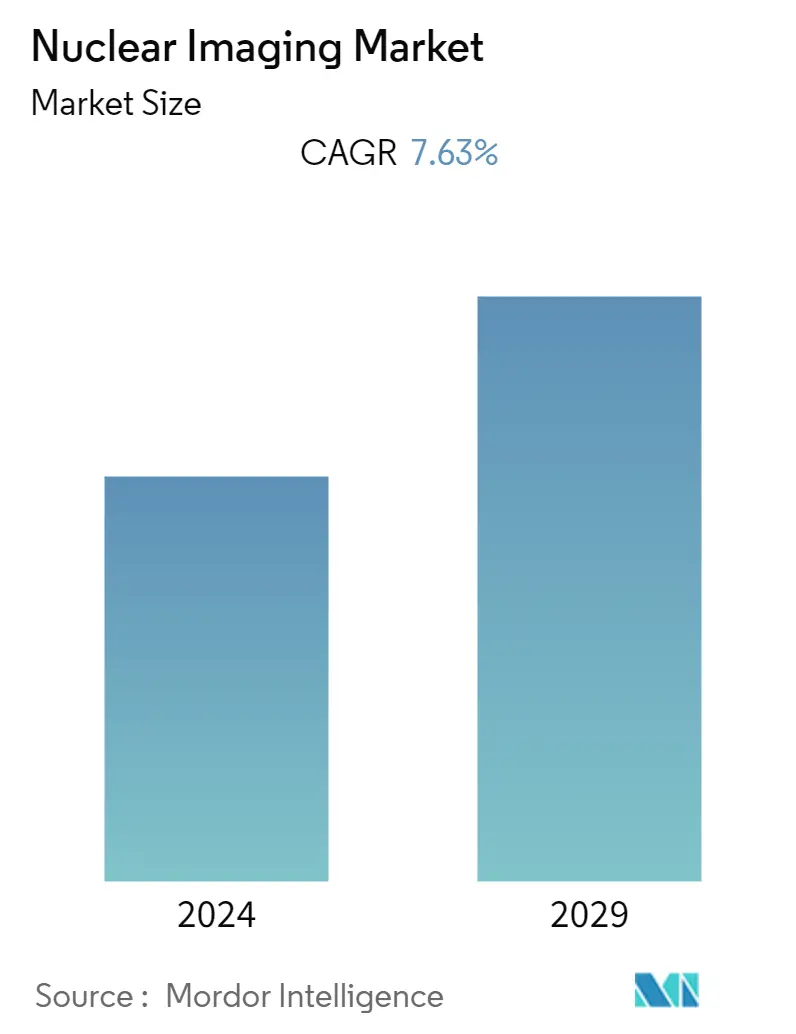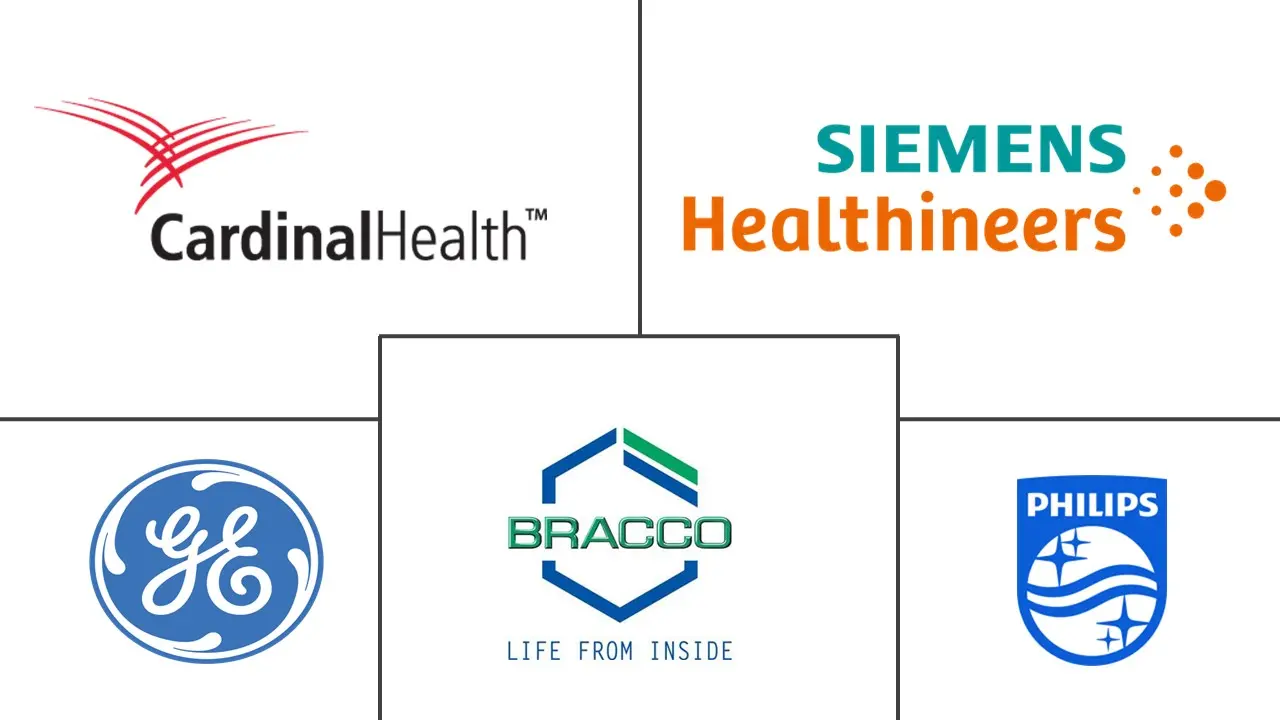Market Size of Nuclear Imaging Industry

| Study Period | 2021 - 2029 |
| Base Year For Estimation | 2023 |
| CAGR | 7.63 % |
| Fastest Growing Market | Asia-Pacific |
| Largest Market | North America |
| Market Concentration | Medium |
Major Players
*Disclaimer: Major Players sorted in no particular order |
Need a report that reflects how COVID-19 has impacted this market and its growth?
Nuclear Imaging Market Analysis
The global nuclear imaging market was valued at USD 7,135.57 million in the base year, and it is expected to reach USD 10,976.18 million by the end of the forecast period, registering a CAGR of 7.63%.
The nuclear imaging market was moderately impacted due to the pandemic. The operation of reactors has been largely classified as an essential service, given its criticality. Therefore, nuclear reactors were not shut down during the lockdown. For instance, under Section 71 of the Labour Act 66 of 1995 in South Africa, its SAFARI-1 reactor remained operational during the lockdown enforced in the country post-March 2020.
However, according to an article published in Seminar in Nuclear Medicine in June 2021, the number of nuclear studies, nuclear cardiac imaging, and oncology positron emission tomography/computed tomography decreased in March and April 2020 due to the rise of COVID-19 cases and deaths as reported by the Centers for Disease Control and Prevention (CDC). The study further stated that procedures increased from June 2020 to February 2021 as COVID-19 cases declined. Thus, COVID-19 has slightly impacted the nuclear imaging market with delays in clinical studies, postponement of various surgeries and imaging procedures, an increase in teleradiology, and several staff-related limitations. However, since the lockdown restrictions were lifted, the industry has been recovering well.
Over the last two years, the market recovery has been led by the high prevalence of chronic diseases. Patients' hospital visits for imaging diagnosis increased as the restrictions were relaxed, and so the industry saw a major surge in diagnostics and treatment. This is expected to promote the market's growth in the next few years.
Certain factors that are propelling the growth of the market include technological advancements, increasing diagnostic applications in various diseases, such as cancer and cardiovascular diseases, government support, and a shift from standalone to hybrid modalities. For instance, according to the Breast Cancer Factsheet Now 2021, around 55,000 women and 370 men in the United Kingdom are diagnosed with breast cancer every year. Breast cancer has claimed the lives of an estimated 600,000 people in the United Kingdom. This figure is expected to climb to 1.2 million by 2030. Moreover, the growing prevalence of heart diseases is expected to propel the growth of the market. As stated by the American Heart Association 2021 Journal, it is estimated that by 2035, more than 130 million adults in the United States will have some type of heart disease. Thus, the growing prevalence of chronic diseases such as cancer and cardiac diseases is expected to increase demand for early and effective diagnosis, thereby boosting the growth of the nuclear imaging market over the forecast period.
The technological advancements in the field of imaging have always been challenging to practitioners in terms of how best to optimize them in patient care. Over the past few years, scientists, researchers, and technologists have been able to bring systems into clinical practice in which two or even more standalone diagnostic imaging modalities are combined. Some of those multimodality imaging systems include PET/CT, SPECT/CT, PET/MRI, and PET/SPECT/CT. For instance, in October 2022, Spectrum Dynamics announced its newest development in digital nuclear medicine imaging capability to image high-energy isotopes using solid-state detector technology in a 3600-CZT-based, wide-bore SPECT/CT configuration. This functionality is available in the new VERITON-CT 400 Series Digital SPECT/CT scanners, enabling total body, brain, heart, and other imaging applications. With such advances in nuclear imaging, the market studied is expected to grow significantly over the forecast period.
The key players are working on many strategic initiatives such as mergers, acquisitions, collaborations, partnerships, and product launches. For instance, in January 2021, Koninklijke Philips NV and Rennes University Hospital signed a five-year innovation and technology partnership to support PET diagnostics, interventional imaging, patient monitoring, and management, among other things. Additionally, in March 2021, GE Healthcare launched StarGuide in the United Kingdom, a next-generation SPECT/CT system that uses the latest digital technologies to help clinicians improve patient outcomes in bone procedures, cardiology, neurology, oncology, and other specialties.
According to the factors mentioned above, such as the growing prevalence of chronic diseases and technological advances in nuclear imaging, the market studied is anticipated to witness growth over the forecast period. However, regulatory issues and a lack of reimbursement may restrain the market's growth.
